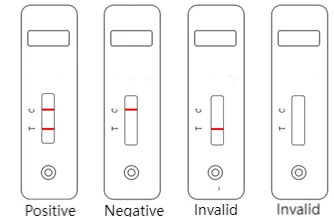

Support Payment Term:

HSBC Hong Kong

paypal

Alibaba Pay

Western Union

USD

EUR

GBP

SGD

HKD

CNH

CAD

MXN

BRL

JPY

THB

MOP

AUD

NZD

PLN

CZK

HUF

RON

CHF

SEK

NOK

DKK

TRY

AED

SAR

ILS

ZAR
$0.00
Discover similar items
Page 1 of 2
African Swine Fever Virus Antibody Detection Kit (Latex Immunochromatography)
[Product Code]
E-ASFV-01
[Packaging Specification]
10 tests per box
[Intended Use]
This kit is used for the detection of total antibodies against African Swine Fever Virus (ASFV) in pig whole blood and serum.
[Test Principle]
The test utilizes a double-antigen sandwich method to detect ASFV antibodies. It contains ASFV antigens pre-fixed on the membrane test area (T), chicken IgY fixed on the membrane control area (C), latex-labeled ASFV antigens, and goat anti-chicken IgY. When an appropriate amount of sample is added to the sample well of the test card, the sample moves along the card. If the sample contains ASFV antibodies, the latex-labeled antigens will bind to them, forming an antibody-antigen-latex complex. During chromatography, this complex binds to the ASFV antigens fixed on the membrane, resulting in a red band appearing in the test area (T). If the sample does not contain ASFV antibodies, no red band will appear in the test area. Regardless of the presence of ASFV antibodies in the sample, a red band will always appear in the control area (C). If the control line does not appear, the test result is invalid, and the sample should be retested.
[Main Components]
- ASFV Antibody Detection Test Card
- 1 bottle of Sample Diluent
- 1 copy of Instruction Manual
[Storage Conditions and Shelf Life]
Store the test cards at 4-30°C, in a cool, dark, and dry place. The shelf life is 12 months. Open the packaging in an appropriate temperature and humidity environment, and use as soon as possible after opening.
[Sample Requirements]
- Pig whole blood and serum should be centrifuged to remove clots or impurities, and the supernatant should be used after returning to room temperature.
- Samples can be stored at 2-8°C for up to 24 hours. For longer storage, store at -20°C or lower.
- Ensure that the sample temperature is restored to room temperature before use.
[Testing Procedure]
- Dilute the sample 10-fold using the sample diluent and mix thoroughly.
- Slowly add 100μl (approximately 3-4 drops) of the mixed solution to the sample well.
- During the reaction, a red band will be observed moving through the result window in the middle of the test strip.
- Read the result after 15 minutes. Results read after 30 minutes are invalid.
[Interpretation of Test Results]
- Positive: A red band appears in both the test area (T) and the control area (C).
- Negative: A red band appears only in the control area (C), and no red band appears in the test area (T).
- Invalid: No red band appears in the control area (C), indicating an invalid test. The sample should be retested.
 [Precautions]
[Precautions]- Follow the instructions carefully.
- The color intensity of the band in the test area (T) may vary. Within the specified observation time, any visible band, even if very faint, should be considered a positive result.
- Sample collection, storage, and testing should strictly adhere to relevant biosafety guidelines.
- The test card is recommended for immediate use upon opening and should not be reused.
- The desiccant inside the aluminum foil bag is not for consumption.
- Before testing, ensure that the samples and test cards have returned to room temperature. The recommended testing temperature is 18-30°C.

